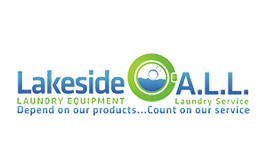When you think about emergency preparedness, laundry rooms might not be the first thing that comes to mind. But whether you're running a laundromat, managing an apartment laundry room, or overseeing laundry operations in a commercial facility, having a plan in place for emergencies isn’t optional, it’s essential.
From natural disasters and power outages to flooding and equipment fires, laundry facilities face a surprising number of risks. Without a plan, even a small incident can disrupt service, damage expensive equipment, and put users and staff in danger.
Here’s how to ensure your laundry facility is prepared for the unexpected.
Why Emergency Preparedness Matters
Laundry facilities are high-traffic, high-utility spaces. They use electricity, gas, and water - three utilities that can become major hazards when something goes wrong. An unplanned outage or mechanical failure not only affects operations but can damage machines, increase liability, and lead to significant revenue loss.
Key vulnerabilities include:
- Power outages or electrical surges
- Flooding or water damage
- Fires (often due to lint buildup or dryer malfunction)
- Gas leaks
- Vandalism or forced entry
- Severe weather events (tornadoes, hurricanes, etc.)
According to the U.S. Fire Administration, clothes dryers cause an estimated 2,900 residential fires annually, resulting in approximately $35 million in property loss - often due to failure to clean lint traps or improper venting .
Steps to Build an Emergency Plan
1. Conduct a Risk Assessment
Start by identifying the most likely emergencies in your region and building. For example, a facility in Florida might focus more on hurricane readiness, while one in the Midwest may prepare for tornadoes or winter storms.
Questions to consider:
- Are your machines on surge protectors or GFCI outlets?
- Do you have a backup power source?
- Is the facility on the ground floor or basement (flood risk)?
2. Create Clear Emergency Protocols
Document step-by-step procedures for different scenarios. This should include:
- Evacuation routes and meeting points
- How to shut off utilities (electric, water, gas)
- Contacts for emergency services, utility companies, and key personnel
- Steps to secure machines and limit damage
Make these protocols visible in the facility and include training for any on-site staff.
3. Install Safety Equipment
Make sure your facility is equipped with:
- Fire extinguishers (Class B or multi-purpose)
- Smoke and carbon monoxide detectors
- Emergency lighting and signage
- First aid kit
These tools should be inspected regularly and easy to access.
4. Protect Equipment with Preventative Maintenance
Emergency preparedness isn’t just about what to do after something goes wrong—it’s also about preventing issues in the first place.
Routine maintenance can stop small problems from turning into emergencies. This includes:
- Cleaning dryer vents and lint traps frequently
- Inspecting water lines for leaks
- Securing machines against tipping or vibration
- Keeping floors dry to prevent slip hazards
Also, consider installing water sensors and automatic shut-off valves in areas prone to leaks.
5. Plan for Power Outages
Backup power is critical, especially for commercial laundry operations. Consider:
- Battery backup for digital payment systems
- Manual override options for locking doors
- Portable generators (and a safe fueling/storage plan)
Don’t forget signage: let customers know what to expect if machines are offline.
6. Review Insurance Coverage
Ensure your business or property insurance includes coverage for:
- Equipment damage
- Utility interruptions
- Flood or water backup
- Business interruption income
Proper documentation and photos of your facility can help streamline claims in the event of damage.
Bonus: Communicate with Customers
If your facility serves the public or apartment residents, communication is key during emergencies. Post signage with updates, send texts or emails if possible, and be transparent about repair timelines.
Keeping people in the loop builds trust and it might even prevent complaints or negative reviews.
Emergencies are unpredictable but your response doesn’t have to be. By proactively planning for risks, training your team, and equipping your laundry facility with the right tools, you’ll be in a much better position to weather the storm (literally and figuratively).
Remember: the best time to prepare for an emergency is before it happens.
Sources
- U.S. Fire Administration. Clothes Dryer Fires in Residential Buildings
- American Red Cross. Prepare Your Business for an Emergency
- NFPA. Fire Safety Tips for Laundry Rooms


-1.png?width=268&height=82&name=Logo_ALL_Full-Color_Extended%20(1)-1.png)